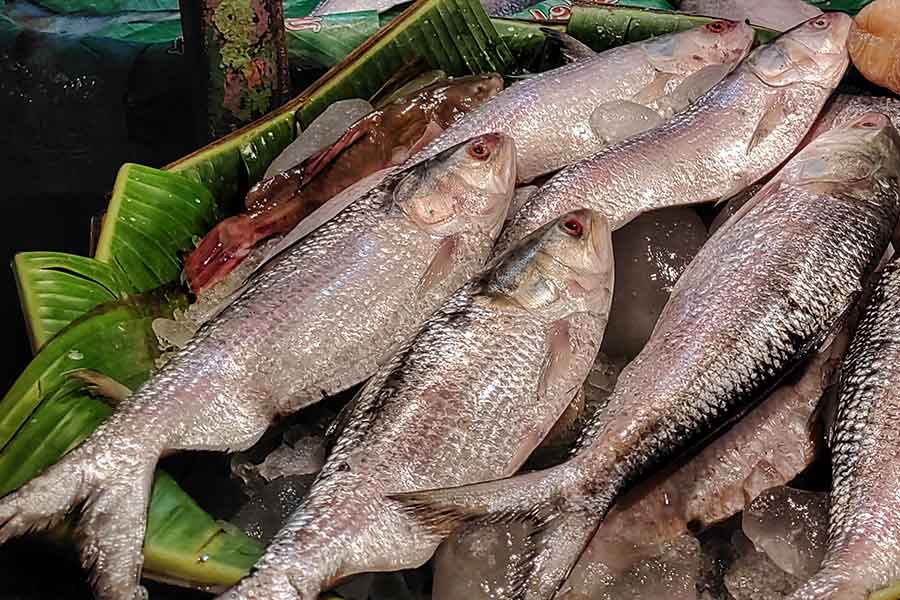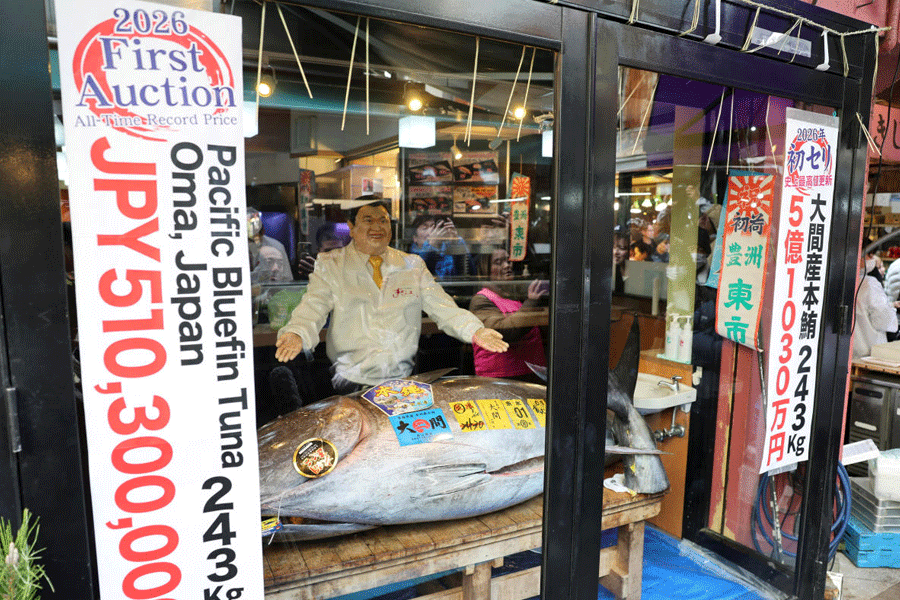“Ilish holds a special place in the culinary culture of Bengal. Ilish is cooked with a lot of love and affection,” food anthropologist Amrita Bhattacharya said in a conversation about the cultural and geographic heritage of Bengal’s most beloved fish.
In Bengali, the word for Hilsa is ilish, and the phrase ‘Rupali Shosyo’, which means ‘silver crop’, is sometimes used to describe it. It evokes not just the glimmer of the fish, but also its deep-rooted connection to the monsoon, the mustard-rich cooking traditions of Bengal, and the short-lived but intense craving that defines a true ilish season.
“It’s like a crop. It has a time, a season,” said Bhattacharya, who has been researching the migration of hilsa.
A fish shaped by rivers
Hilsa is an anadromous fish, which means it migrates from the sea to the river to spawn. And in that journey, something magical happens. The taste, the texture, the oil content of the fish, all shift and settle depending on which river the fish has travelled through. “The fish that comes through the Rupnarayan has a different texture and taste than the one from the Padma. The one from Irabati or Ganga has its own character,” she explained.
She added that even the way hilsa is cut and cooked varies by community. “The Koli community in Mumbai cuts fish differently, uses masala differently. It's the same with Ilish. The way you cut it, how you slow-cook it, what kind of mustard or oil you use — it all changes the story.”
In many fishing communities, especially in the Sunderbans and Midnapore belts, there are generationally trained fishermen, or jele, who can detect the arrival of ilish by the smell in the water. “They could smell the fish in the river. It takes years to build that kind of instinct,” shared Bhattacharya.
Ghoti vs Bangal: When Ilish becomes identity
In Kolkata, hilsa isn’t just a fish — it’s a cultural identity. On one side are the Ghotis (those with roots in West Bengal) and on the other, the Bangals (from East Bengal, now Bangladesh). Both communities claim superiority, and nowhere is this more evident than in the great ilish vs chingri (hilsa vs prawn) debate.
But underneath this playful rivalry lies a deeper truth — hilsa is a symbol of belonging, memory, and seasonal preference. As Bhattacharya put it, “During monsoon, the Bengali thali feels incomplete without ilish. That craving — you don’t feel that for salmon or trout.”
A geopolitical fish
This year, however, Bengal’s most emotional fish may not make it to Kolkata tables. With uncertainty around imports from Bangladesh, the Padma river ilish — widely considered the gold standard — might be unavailable in the city’s markets.
Trade disruptions, export restrictions from Dhaka, or political tensions could lead to a complete absence of Bangladeshi ilish from Bengal’s plates. Unlike other fish, this absence is mourned.
Rivers of silver
Despite the shrinking stock, there are still a handful of regions across Bengal where river-caught hilsa is found. The routes through Diamond Harbour, Kakdwip, Namkhana and Digha still yield silver catches. Further east, the Rupnarayan belt, stretching through Geonkhali and Mansadwip, remains a reliable source. From the banks of the Hooghly to the lesser-known Irabati and Ichhamati rivers, each pocket of water brings its own nuance to the fish.“In the evenings, one can find fresh kancha ilish on the banks of the Hooghly. There is no definite possibility of finding these fishermen who sit with a minimal quantity of hilsa. If you visit regularly, you may chance upon them,” the food anthropologist said.
Beyond Bengal’s borders, Chandana Ilish refers to a variety of hilsa (Tenualosa toli) found in the estuaries of Bangladesh, named after the Chandana River, an offshoot of the Padma. This fish is also found in the coastal waters of Malaysia, where it is locally known as ikan terubok. And to the north, hilsa enters Bengal from the Farakka side of the Padma river, enriching the waters around Malda and Murshidabad with its seasonal presence.
However, even within Bengal, government-imposed restrictions on size and seasonal fishing have altered the supply. “In Purba Midnapore, we saw officers measuring fish to make sure smaller ones are released,” Bhattacharya observed during her latest visit to Mahishadal.
While fish farms in Barrackpore or Kishoreganj try to replicate the magic, the verdict is clear — farmed ilish can never match the taste and texture of wild, river Ilish.
“You can eat ilish from Rupnarayan, from Namkhana or Digha, and some of it will be good. But that quality — that clean oil, that soft flake — that comes only from the right fish in the right river at the right time,” Bhattacharya said.
A silver season… fading?
As the hilsa season begins, what was once a celebration of abundance now feels like a quiet negotiation — with nature, with trade, with time. “The ilish will come. Maybe not from where we expect it. Maybe not in the quantity we hope for. But Bengalis will wait for it, every monsoon,” Bhattacharya concluded.
And the good news arrived around mid-June. The first hilsa catch of this season by fishermen in South 24 Parganas has amounted to over 30 tonnes, nearly double the initial haul recorded in the first phases of the past two years. Officials credited this bumper start to reduced salinity after timely monsoon rains and stricter enforcement of the two-month fishing ban.










